
Hex Mayflies
Hexagenia limbata
The famous nocturnal Hex hatch of the Midwest (and a few other lucky locations) stirs to the surface mythically large brown trout that only touch streamers for the rest of the year.
Featured on the forum

Nymphs of this species were fairly common in late-winter kick net samples from the upper Yakima River. Although I could not find a key to species of Zapada nymphs, a revision of the Nemouridae family by Baumann (1975) includes the following helpful sentence: "2 cervical gills on each side of midline, 1 arising inside and 1 outside of lateral cervical sclerites, usually single and elongate, sometimes constricted but with 3 or 4 branches arising beyond gill base in Zapada cinctipes." This specimen clearly has the branches and is within the range of that species.

Troutnut is a project started in 2003 by salmonid ecologist Jason "Troutnut" Neuswanger to help anglers and
fly tyers unabashedly embrace the entomological side of the sport. Learn more about Troutnut or
support the project for an enhanced experience here.
Landscape & scenery photos from the South Fork Sauk River



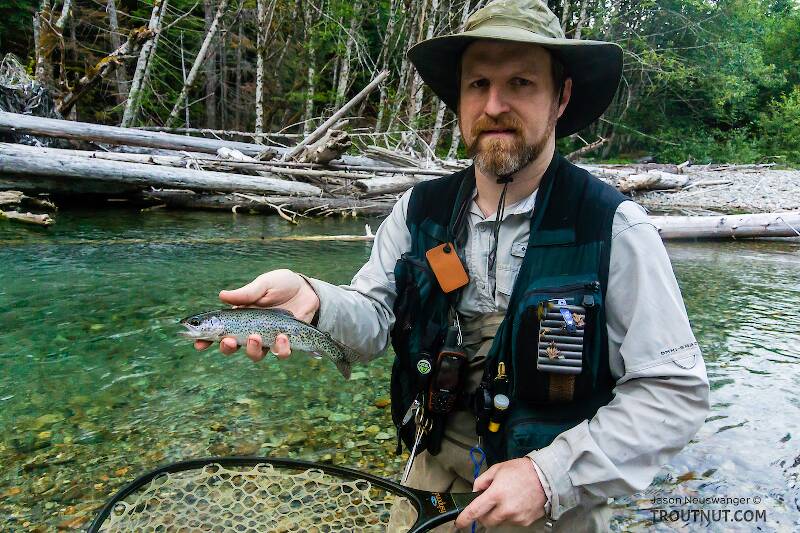

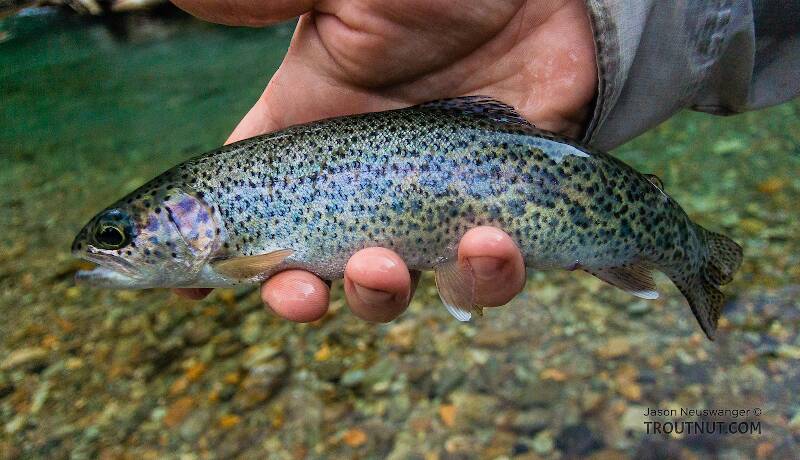

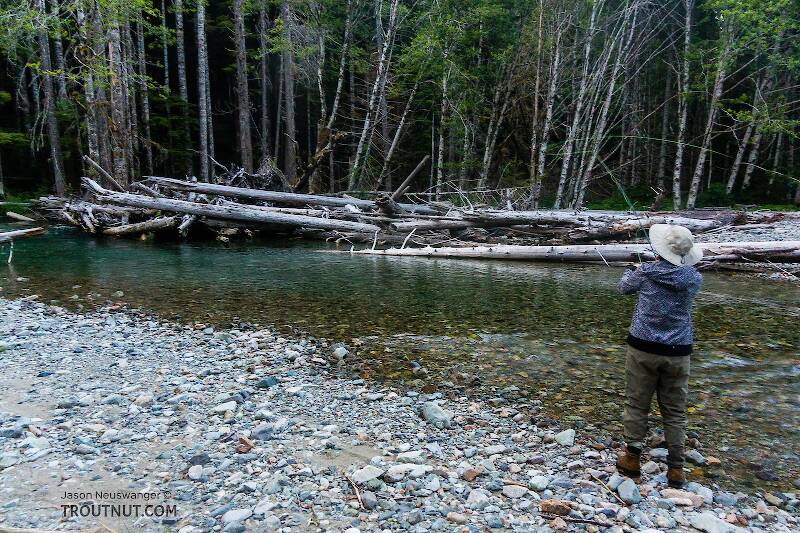

Closeup insects by Troutnut from the South Fork Sauk River in Washington
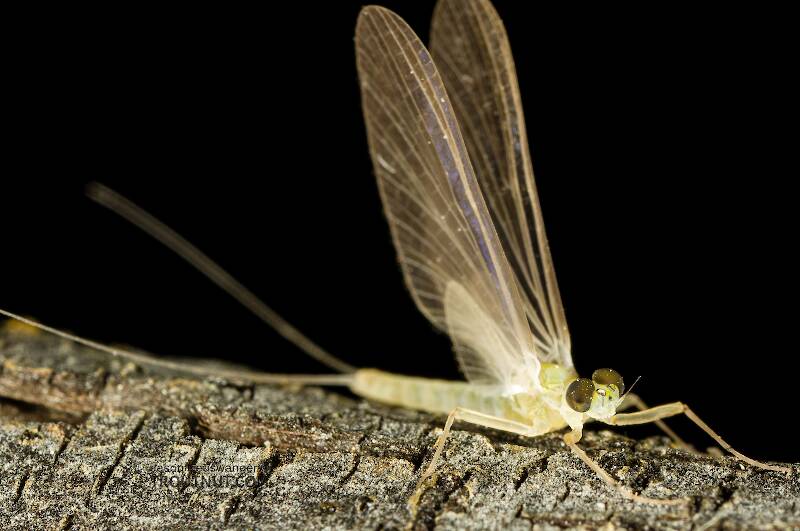
The lack of a darkened humeral crossvein rules out Epeorus albertae and Epeorus dulciana. The lack of a dark macula on the forefemora rules out Epeorus longimanus. The small size rules out Epeorus grandis and Epeorus permagnus. That leaves as the only possibility known in Washington state Epeorus deceptivus. It is a small species, although not reportedly quite as small as this specimen. I couldn't find anything in the species description in Traver (1935) to definitively confirm or rule out the species ID, given that I don't have the preserved specimen to check under a microscope, but it has to be either deceptivus or something not yet reported in Washington.
It was collected at the same time as a similar-sized female dun.
It was collected at the same time as a similar-sized female dun.
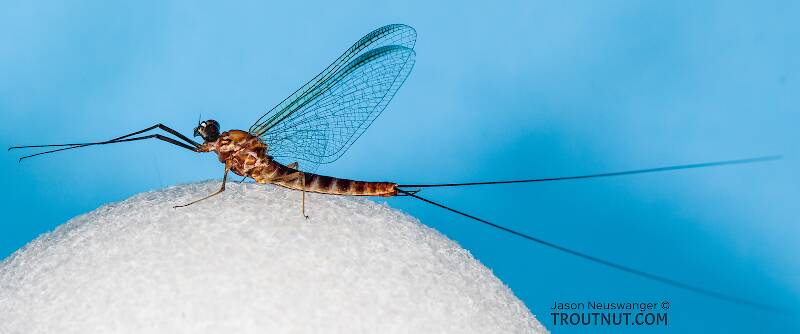
I'm fairly sure this is a specimen of Rhithrogena virilis based on closeup examination of the reproductive anatomy under the microscope (not shown in photos). The other other species of Rhithrogena this large is Rhithrogena flavianula, but the key in Needham's Biology of Mayflies mentions annulation in the abdomen (visible in some images on bugguide.net) more distinct than that on this specimen.
The body and front wing were both about 15.5 mm long, while the cerci were 40 mm long.
The body and front wing were both about 15.5 mm long, while the cerci were 40 mm long.
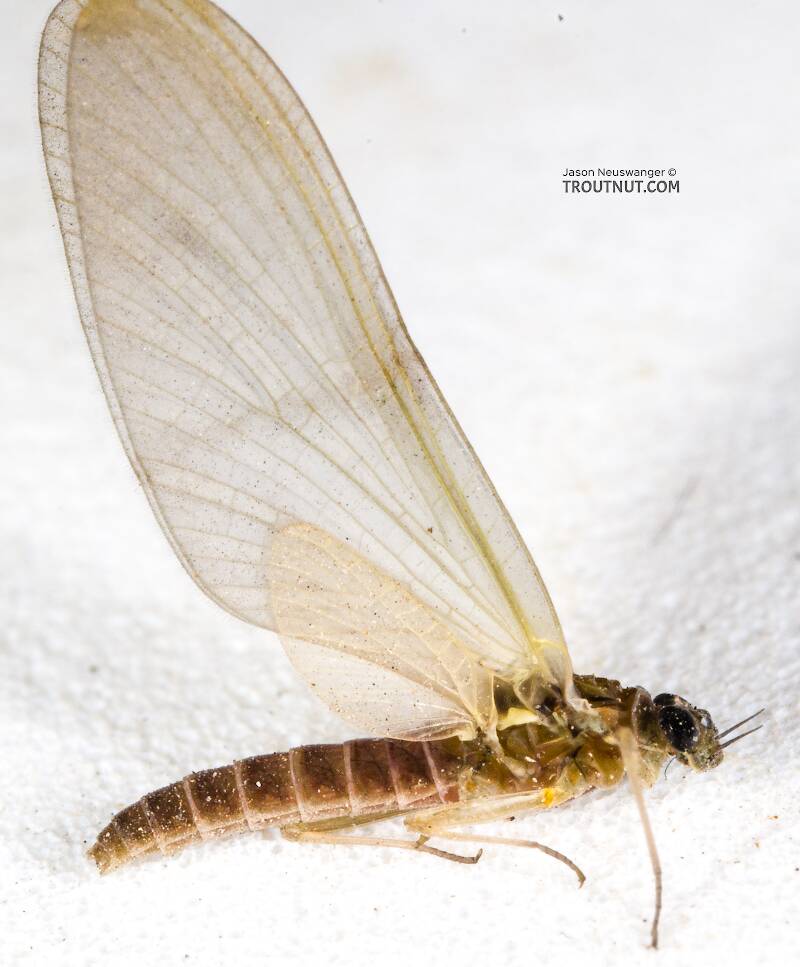
I'm guessing this female is of the same species as this male dun, because they came from the same pool at the same time and the size matches, although the males and females would look very different in this case.
References
- Baumann, Richard W. 1975. Revision of the Stonefly Family Nemouridae (plecoptera) : a Study Of The World Fauna At The Generic Level. Smithsonian Contributions to Zoology undef(211): 1-74.

